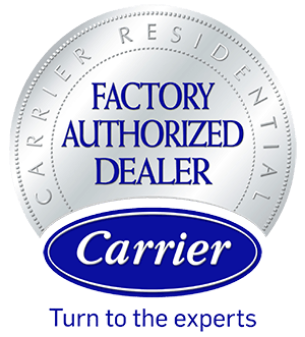Every summer, as temperatures climb, homeowners rely on their HVAC systems to keep indoor spaces comfortable. The most common HVAC problems during summer—such as refrigerant leaks, clogged filters, electrical failures, thermostat issues, and drainage concerns—can often be prevented with routine maintenance and timely air conditioning repair. Regular HVAC services and inspections from trusted professionals like Service Air Eastern Shore help identify problems early, so small issues don’t become major disruptions in the hottest months.
HVAC system breakdowns in the summer can lead to discomfort and increased energy bills, especially when the system is pushed to its limits. Preventative maintenance, professional installation, and prompt repairs are key to keeping cooling efficiency high and avoiding costly emergencies. With these HVAC maintenance tips, homeowners can enjoy uninterrupted comfort all season.
Understanding Common Summer HVAC Problems
Higher temperatures and heavier system loads can increase strain on air conditioners and heat pumps. Dirty filters, low refrigerant, and neglected components often lead to cooling failures and higher energy bills.
How Hot Weather Impacts Cooling Systems
During hot spells, cooling systems work longer and harder. This increased run time can highlight or aggravate underlying issues, such as clogged air filters and reduced airflow.
Excessive heat also puts stress on compressors and electrical components. It can cause refrigerant lines to sweat or leak, reducing cooling capacity.
Humidity compounding with heat makes indoor air feel warmer, requiring HVAC systems to cool and dehumidify simultaneously. This can tip borderline systems into frequent cycling or shutdown.
Preventive steps, like scheduling regular professional maintenance and checking thermostat settings, help minimize wear from hot weather. Changing filters monthly during the hottest months is a simple but essential task.
Top Reasons for Summer Cooling Failures
1. Dirty Air Filters:
Clogged filters block airflow, causing cooling loss and making compressors overheat.
2. Low Refrigerant:
Leaks or insufficient refrigerant lower efficiency and cooling power. A professional should inspect for leaks and recharge as needed.
3. Electrical Issues:
High temperatures can cause circuit breakers to trip and capacitors to fail.
4. Thermostat Malfunctions:
Faulty or miscalibrated thermostats can send incorrect signals, causing erratic cooling cycles.
5. Drainage Problems:
Blocked condensate drains lead to moisture buildup and potential water damage.
Regular HVAC maintenance helps detect these issues early. Homeowners should monitor air quality, listen for abnormal noises, and consult an HVAC technician for persistent cooling problems.
Solutions and Prevention for the Top 5 HVAC Issues
Preventing HVAC issues can reduce costly breakdowns, improve system efficiency, and maintain comfortable indoor temperatures all summer. Taking action on common issues like leaks, airflow blockage, thermostat malfunctions, and drainage can greatly extend equipment lifespan.
Problem 1: Refrigerant Leaks
Refrigerant leaks are a main cause of weak cooling and rising energy bills in summer. Signs include ice buildup on coils, hissing noises, or the air conditioner not cooling as it should. Technicians can detect leaks using electronic detectors or UV dyes.
Homeowners should schedule annual professional inspections and listen for unusual noises. For systems using R-22 or older refrigerants, prompt repair is important due to phase-out regulations and high recharge costs. Proper leak repair includes sealing line sets, replacing worn connections, and ensuring the system is recharged with the correct refrigerant type and amount.
Regular inspections and swift fixes help prevent environmental harm and compressor damage. Monitoring system performance during peak heat will also catch small problems before they worsen.
Problem 2: Dirty Air Filters
Dirty air filters restrict airflow, which makes the HVAC system work harder and reduces indoor air quality. During summer, filters can clog quickly from pollen, dust, and increased use. Symptoms of a dirty filter include weak airflow, hot or cold spots, and visible dust on vents.
Changing filters every one to three months, or more often in dusty areas, helps maintain peak performance. Homeowners should check filters more frequently during heatwaves. Using HEPA or pleated filters can provide improved filtration, but it’s important to use a type compatible with the specific system model.
Keeping return air vents clear and vacuuming around intake grills also improve airflow. Maintenance schedules can be tracked with simple reminders or stickers on the HVAC unit.
Problem 3: Cooling System Troubleshooting and Upgrading Thermostats
Thermostat problems can cause temperature inconsistencies and unnecessary cycling. Common causes include dead batteries, loose wiring, or improper settings. Sometimes, the thermostat is just outdated or installed in a poor location.
If the system isn’t responding as expected, check batteries, review programmed schedules, and ensure the wall unit is level and away from direct sunlight. For easier management and better efficiency, upgrading to a programmable or smart thermostat offers improved control and energy tracking.
Professional installation is recommended for hardwired units to prevent wiring errors. Modern thermostats can alert homeowners to system issues, help maintain ideal setpoints, and even integrate with home automation platforms.
Problem 4: Addressing Drainage Problems
Clogged condensate drains are a frequent cause of water leaks and moisture problems, especially in humid summer weather. When the drainage system can’t remove condensation, water may back up, causing overflow, musty odors, or even water damage.
To prevent drainage issues, regularly inspect the drain pan for standing water and clear visible blockages. Pouring a cup of distilled vinegar through the condensate line helps break up algae and mineral buildup. Ensure the drain hose is angled downward and isn’t pinched or obstructed.
Some systems use float switches to shut down cooling when overflow is detected—test these safety features during spring maintenance. Professional cleaning is advised if regular DIY steps do not resolve slow-draining or repeated overflow issues. Early attention prevents mold growth and maintains safe, efficient system operation.
Problem 5: Resolving Electric Control Failures
Electric control failures can stop HVAC systems from running or cause them to operate unpredictably, especially during periods of heavy summer use. Addressing these problems quickly and maintaining electrical components can prevent inconvenient breakdowns and expensive repairs.
Recognizing Electrical Malfunctions
Electric control failures typically involve faulty relays, worn-out capacitors, or corroded wiring. These issues may cause the system to fail to start, run erratically, or cycle on and off more frequently than usual. Inconsistent cooling, sudden power losses, or strange clicking or buzzing noises are often key signs of electrical trouble.
For most HVAC units, capacitors and contactors are the most common points of failure in summer. Capacitor failure may cause the outdoor unit’s fan or compressor not to run. Burned or pitted contacts in relays can interrupt the power supply to the components. Frayed or discolored wiring may indicate overheating or damage.
A table of common electrical symptoms and their typical causes can help:
| Symptom | Possible Cause |
| Unit won’t start | Failed capacitor, relay |
| Unit cycles quickly | Faulty control board |
| Unusual noises | Electrical arcing, relay |
| No cooling | Wiring/connectivity issue |
Homeowners noticing these symptoms should turn off the system and seek professional assistance.
Preventive Maintenance for Electrical Systems
Regular inspections are crucial for preventing electric control failures. Simple HVAC maintenance tips include:
- Schedule professional electrical inspections annually.
- Ensure the outdoor unit area is free from debris and plants.
- Listen for abnormal noises during operation and address changes promptly.
Proper documentation of inspection dates and repairs allows technicians and homeowners to identify recurring issues and plan timely replacements. This reduces the likelihood of breakdowns during peak heat, keeping the system reliable and safe.
Expert Maintenance Recommendations
Regular preventive maintenance is key to reducing the risk of HVAC problems during the summer months. Simple steps like replacing air filters, clearing debris around outdoor units, and checking thermostat settings can help ensure efficient operation.
It is recommended to schedule a professional inspection at least once a year. Qualified providers, such as Service Air Eastern Shore, offer detailed system checks that catch issues before they turn into costly repairs.
Common maintenance tasks that professionals perform include:
- Inspecting and cleaning coils
- Checking refrigerant levels
- Testing electrical connections
- Calibrating thermostats
- Lubricating moving parts
Staying on top of these tasks supports system reliability and maintains air quality indoors. Technicians may also provide guidance on optimizing energy use and making necessary upgrades.





